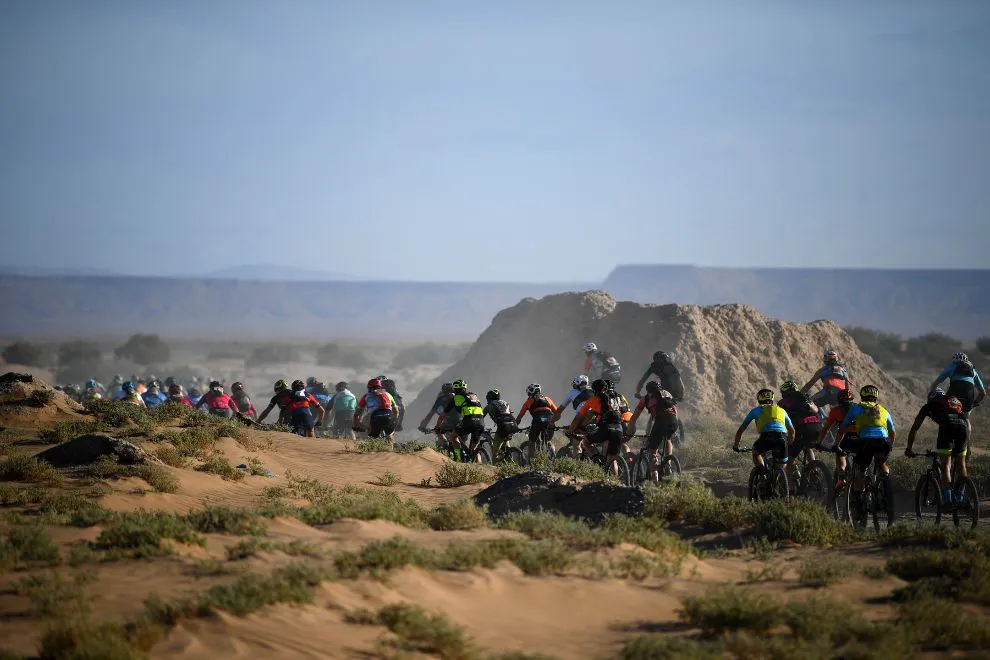Therefore, there is no better person to speak to when you want to find out more about this stunning race that has been capturing the imagination of cyclists all over the world for the past nine years. He sat down with We Love Cycling to discuss the Škoda Titan Desert and its short but terrific history.
The origins of the race are intertwined with that of the Dakar Rally. The Dakar is a formidable race that sees rally drivers of all abilities take on tough, off-road terrain with stages ranging from short distances to 900-kilometre epics, which test both the drivers and their vehicles. This race first took place in 1978, organised by the Amaury Sports Organisation (ASO), and ran from Paris, France, to Dakar, Senegal. It stayed this way for some time but was then moved to South America in 2009, due to security reasons. Now in its third iteration, the race has been taking place in the Middle East, with most stages running across desert sands. This is where Manuel comes in.
“I have been working on the race since the first day. I remember late 2005 when Juan Porcar asked Felix Dot and me to work on the Dakar of MTB. A race in the desert of Morocco like The Dakar but with mountain bikes. Since the first edition, I have been in charge of the sports area of the race,” he opens.
https://www.instagram.com/p/CdJewpjMjoj/
Since then, more than 5,000 racers have joined the race, including the best Spanish cyclist of all time, Miguel Induráin. The spectators could also enjoy watching legends like Roberto Heras, Melchor Mauri or Sylvain Chavanel riding for the Titan win. Set between the Atlas Mountains and the Sahara Desert, this race is brutal but many riders come back year after year – a testament to the organisation that Manuel is part of.
Speaking about the challenges of the Titan Desert race, he explains: “The logistics are not easy, we move a big group of people around (riders, press, assistants, staff, etc.) and we build a town in the middle of nowhere. For me, I like to show the beauty of the country and I change the routes with each edition. We also work hard on the security of the competitors. But the main challenge is to make each rider happy during the week.”
Each rider has little time to prepare for the race, which means the only thing they can control before the start is their training and endurance for what will be an arduous week on the bike. With this said, the Director gave us a teaser of what riders can expect in 2022: “This is one of the most challenging editions. A route without mountain stages but with two dune crossings, long stages, and lots of navigation.”
Over the past 16 years, since the inaugural edition in 2006, the race has also been to other countries under the Titan banner. Spain, Saudi Arabia, and Mexico hosted the Titan Desert race and there has even been a Titan Tropic race, which took place in Cuba in 2016 and 2017. Much of the success can be put down to Manuel as well as Juan Porcar, one of the founding fathers and the first rider to complete the Dakar Rally by bike.
https://www.instagram.com/p/CTZWi7lsG7n/
The adventure has expanded over the years, but the Titan Desert remains true to its roots – something Manuel is proud of. “Although many things have changed, we keep the main spirit that [Porcar] imagined. “I love everything about mountain bikes but also adventure and travelling, and Morocco is a special place for me. I like my work to be my hobby.”
Through the years, the race has evolved and as we already mentioned, plenty of star names have taken on the challenge. This historic race evidently has a special place in the Director’s heart but his favourite memory hits closer to home. “Each year, I gain a lot of memories of the race, the camps, the recce trips but I love the memory of the 2015 edition when my son, 2 years old at this time, showed up with my wife and family in the camp for the last 2 stages. It was a big surprise for me,” Manuel reminisces.
This race has given riders nightmares since 2006 but there is a real sense of community that is created each year. With Manuel’s favourite memory and the way in which he describes the race, it is easy to see why it entices people back year after year.




